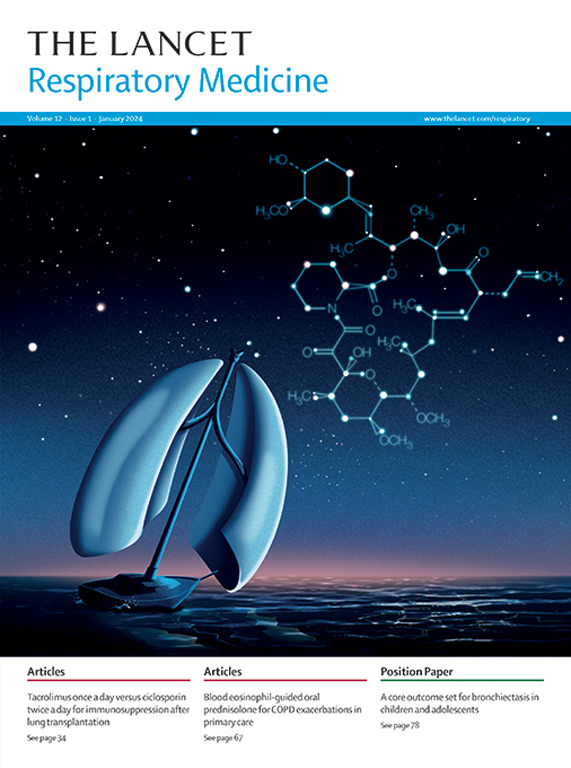Marcel Proust (1871–1922): a historico-medical review of his fatal asthma
IF 38.7
1区 医学
Q1 CRITICAL CARE MEDICINE
引用次数: 0
Abstract
Section snippets
The historico-medical context
Marcel Proust's medical conditions have been widely studied, with detailed reconstruction of the history of his illness and the influence it had on his artistic production. Proust had recurrent attacks of severe asthma from the age of 9 years, later developing an obstructive lung disease, before dying of infectious pneumonia at the age of 51 years.Marcel Proust grew up in a family of doctors and had the availability of personal acquaintances and medical texts from which to draw information: hisAsthma, meditatio mortis
One of the most accurate descriptions of asthma by today's standards was that of John Floyer (1649–1734), a physician and polyhistor, himself suffering from asthma, who had defined the disease, separating it from other pulmonary disorders and recognising its hereditary nature. He identified the cause of dyspnoea in bronchial constriction, due to spasm, considering tonic spasm more like catalepsy than the clonic convulsion of epilepsy. According to Floyer, periodic asthma, understood asMarcel Proust's disease
Proust had suffered his first asthma attack at the age of 9 years. Subsequently, his asthma had worsened, and he had been visited by numerous doctors. However, the only doctor who took care of Proust during the last 20 years of his life was Maurice Bize, a family doctor who visited him faithfully every Friday from 1904 onwards until his death.Proust's asthma was probably a common and severe form of bronchial asthma associated with allergies and hay fever. The non-respiratory manifestationsNeurologists at Proust's bedside
As asthma was considered a nervous disease, it is not surprising that the most famous doctors consulted by Proust were neurologists or neuropsychiatrists. Proust consulted Joseph Babinski (1857–1932) for the first time in the spring of 1918, when he thought he needed to undergo brain surgery because he feared he would develop facial paralysis. In 1904, Proust turned to Dr Jules Dejerine (1849–1917), Charcot's second successor at the Clinique des Maladies du Systèmes Nerveux at La Salpétrière.Conclusions
Proust's illnesses influenced his work, so much so that some scholars have suggested that there is a very close correlation between his creative genius and the ailments he suffered from, particularly insomnia and asthma.Proust suffered from asthma throughout his life, but the list of his other symptoms is extensive: neurasthenia, anxiety, palpitations, headaches, stomach upsets, hay fever, insomnia, slurred speech, dizziness, temperature dysregulation, and arthritis. The use of fumigations with马塞尔·普鲁斯特(1871-1922):他致命哮喘的历史医学回顾
历史医学背景马塞尔·普鲁斯特的病情得到了广泛的研究,详细地再现了他的病史及其对他艺术创作的影响。普鲁斯特从9岁起就反复发作严重哮喘,后来又患上了阻塞性肺病,51岁时死于传染性肺炎。马塞尔·普鲁斯特生长在一个医生家庭,有熟人和医学文献可以从中获取信息:他的哮喘,冥想。按照今天的标准,对哮喘最准确的描述之一是约翰·弗洛耶(John Floyer, 1649-1734)的描述。弗洛耶是一名医生和多历史学家,他自己也患有哮喘,他定义了这种疾病,将其与其他肺部疾病区分开来,并认识到它的遗传性。他认为强直性痉挛更像猝厥,而不是癫痫的阵挛性抽搐,从而确定了痉挛引起支气管收缩的呼吸困难的原因。根据Floyer的说法,周期性哮喘被理解为马塞尔·普鲁斯特的疾病。普鲁斯特在9岁时第一次哮喘发作。后来,他的哮喘恶化了,他去看了很多医生。然而,在普鲁斯特生命的最后20年里,唯一照顾他的医生是莫里斯·比兹,他是一位家庭医生,从1904年起直到他去世,他每周五都忠实地看望他。普鲁斯特的哮喘可能是一种常见而严重的支气管哮喘,与过敏和花粉热有关。由于哮喘被认为是一种神经系统疾病,所以普鲁斯特咨询的最著名的医生都是神经学家或神经精神病学家也就不足为奇了。1918年春天,普鲁斯特第一次咨询了约瑟夫·巴宾斯基(Joseph Babinski, 1857-1932),当时他认为自己需要接受脑部手术,因为他担心自己会患上面瘫。1904年,普鲁斯特求助于朱尔斯·德杰里纳博士(1849-1917),他是沙可在萨尔帕 神经系统疾病诊所的第二任继任者。斯普罗斯特的疾病影响了他的创作,以至于一些学者认为他的创作天才与他所患的疾病,尤其是失眠和哮喘之间有着非常密切的联系。普鲁斯特一生都饱受哮喘之苦,但他的其他症状也很多:神经衰弱、焦虑、心悸、头痛、胃部不适、花粉热、失眠、口齿不清、头晕、体温失调和关节炎。用熏蒸的方法
本文章由计算机程序翻译,如有差异,请以英文原文为准。
求助全文
约1分钟内获得全文
求助全文
来源期刊

Lancet Respiratory Medicine
RESPIRATORY SYSTEM-RESPIRATORY SYSTEM
CiteScore
87.10
自引率
0.70%
发文量
572
期刊介绍:
The Lancet Respiratory Medicine is a renowned journal specializing in respiratory medicine and critical care. Our publication features original research that aims to advocate for change or shed light on clinical practices in the field. Additionally, we provide informative reviews on various topics related to respiratory medicine and critical care, ensuring a comprehensive coverage of the subject.
The journal covers a wide range of topics including but not limited to asthma, acute respiratory distress syndrome (ARDS), chronic obstructive pulmonary disease (COPD), tobacco control, intensive care medicine, lung cancer, cystic fibrosis, pneumonia, sarcoidosis, sepsis, mesothelioma, sleep medicine, thoracic and reconstructive surgery, tuberculosis, palliative medicine, influenza, pulmonary hypertension, pulmonary vascular disease, and respiratory infections. By encompassing such a broad spectrum of subjects, we strive to address the diverse needs and interests of our readership.
 求助内容:
求助内容: 应助结果提醒方式:
应助结果提醒方式:


